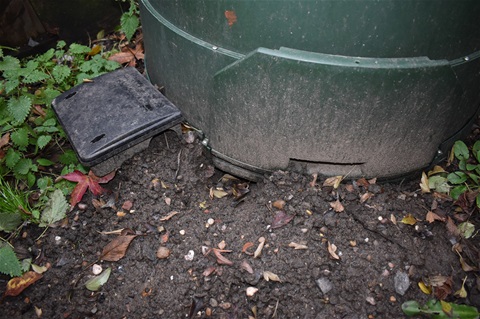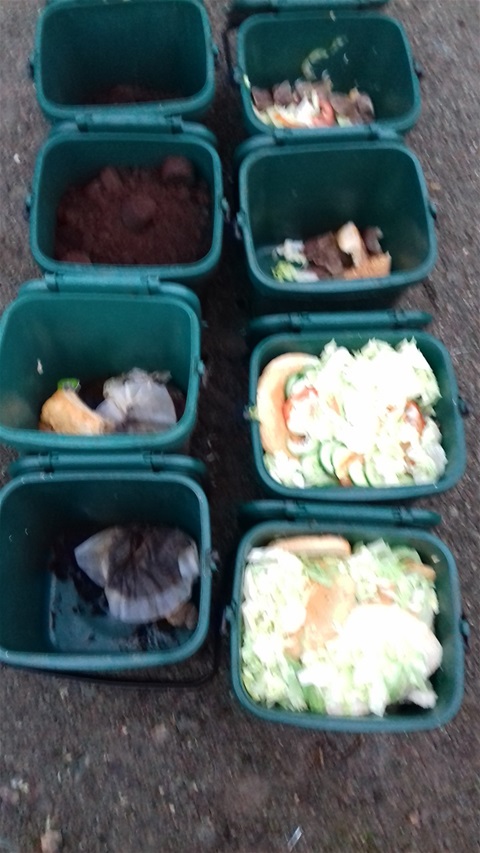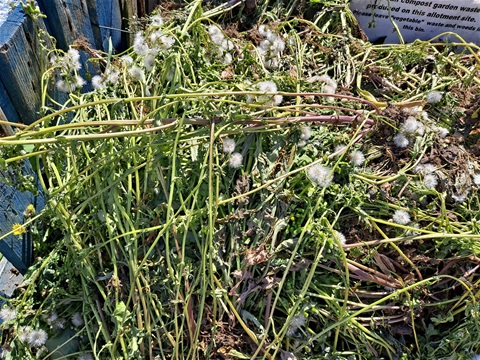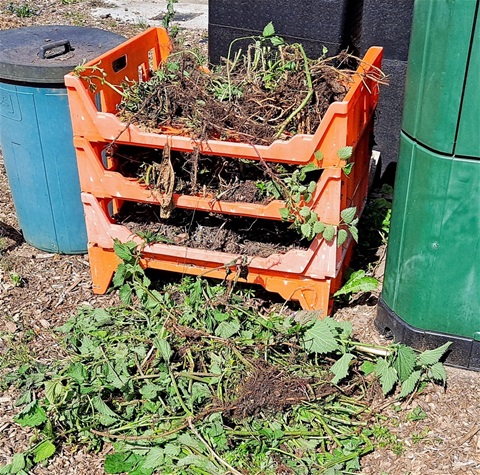Composting leaves
The “compost leaves” page of Carry-on Composting has been revised to give an increased information on composting holly as in addition to being a garden compost problem it presents an annual challenge when disposing of holly as part of the Christmas decorations.
In the UK, the general advice seems to be that leaves should be used to make leafmold rather than compost but in the USA, leaves seem to be considered one of the most reliable sources of winter browns and I have found dry autumn leaves as an excellent source of browns for the allotment compost bins over the winter.
All leaves are not the same and the type of leaf available may influence the choice of whether they are used to make leafmould or compost.
Ash, cherry, linden, maple, popular and willow are relatively low in lignin and relatively high in nitrogen and calcium and compost relatively quickly. Beech, birch, oak, and sweet chestnut as bad leaves being higher in lignin and lower in nitrogen and calcium and taking at least two years to compost. In addition to the lignin content there is another problem with holly leaves is that the waxy coating on the leaves provides a protective outer layer preventing water loss which makes it important to shred these leaves and to only compost them in small amounts spread across several bins if possible. However, as it can still take up to two years to compost holly, so it is best to use a dedicated bin. When large amounts of Cherry laurel are shredded a smell of smell of almonds or marzipan, can sometimes be detected and concern has been expressed about the risk of cyanide poisoning. The safety precautions are not complicated i.e., chipping, or shredding it in a well-ventilated area and not standing downwind while working.
As a rule, leaves being used for composting or making leafmold should be shredded as this exposes a greater surface area, reduces the risk of the leaves matting it also reduces the bulk of the leaves making composting easier. At Christmas, I also shred the holly wreaths and compost them with the saved autumn leaves or add them to the leafmould bin.
Mixing the leaves with grass or another good source of nitrogen will speed decomposition. If a shredder is not available two processes can be combined by spreading the leaves of the lawn and mowing them.
To cold compost leaves in a dalek type bin , use 50-70% (by volume) leaves and 30-50% of high nitrogen ensuring the carbon rich leaves are well mixed with the nitrogen rich food scraps, vegetable leaves, grass etc. and other materials in the bin.
If hot composting leaves, the compost bin should be at least one cubic meter, but preferably bigger, to retain the heat and help the leaves decompose more quickly. When hot composting I follow a 6-8” layer of leaves with a 1-2” layer of manure as two of the brown and green layers when constructing a bin using alternat layers of green and browns. Others suggest using thinner layers of leaves. Some add a layer of soil between the leaves and manure. If manure is not available another nitrogen rich layer may be used such as dried blood, or bone meal. An alternative method is to make a normal layered compost pile using layers of 4-5 parts leaves to one-part green garden or kitchen waste. The material is initially mixed and aerated 1-2 times a week. Additional greens can be added when the contents are turned to prolong the active stage and maintain the temperature.
More information is given at ( http://www.carryoncomposting.com/142941489) or by clicking Composting leaves.



